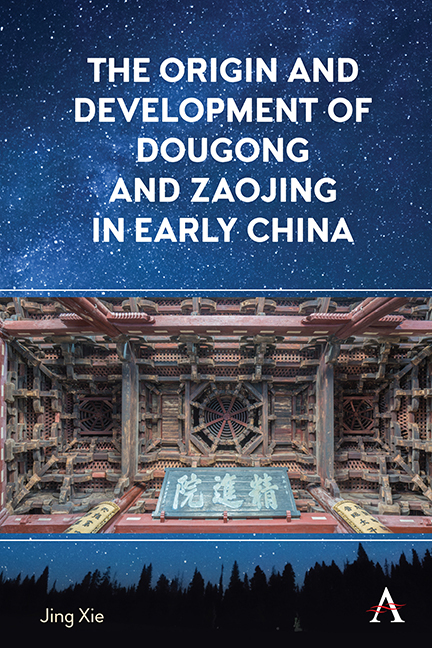1. - Searching for the Origin of Dougong in the Chinese Bronze Age
Published online by Cambridge University Press: 22 November 2023
Summary
Among various research topics on dougong, the most intriguing question is how dougong was formed in the first place. There have been seemingly ceaseless efforts in searching for the origin of dougong. Yang Hongxun, for example, pointed out that the birth of dougong was a result of structural evolution. In early wooden architecture, he posits that there was a physical transformation of posts supporting an eave to an oblique beam, then to a curved beam, and eventually to a curved arm with block (Figure 1.1). In the essay titled “The Origin and Development of Dougong,” Han Baode ponders over the early forms of dougong. Through inquiring about the physical remains and literature related to dougong, mainly from the Han dynasty, he challenges one theory that dougong was derived from the stone architecture in the West. Han raises the hypothesis that the birth and development of dougong was most likely influenced by religious forces. Guo Huayu also enquires about the origin and development of dougong and from a typological perspective, presents some early cases reflecting the forms of dougong in chronological order, including a bronze vessel, a lacquerware illustration, a bronze table, some pottery models, and their associations with many remaining historic buildings.
According to archaeological discoveries, Chinese architecture can be well traced back to the Neolithic settlements. Many foundations of palace and religious buildings from the Chinese Bronze Age have also been excavated. Yet the form of dougong is largely absent from these archaeological sites. It is in the Han dynasty that the flourishing of dougong is widely evident (as discussed in Chapter 2). Certainly, there is a gap between the absence and the flourishing of dougong, which suggests a long formative period of centuries of dougong prior to the Han period.
In examining the early form of dougong, some research has observed the emergence of dougong patterns in the bronze vessels and furniture from the Shang and Zhou dynasties. Yet these studies only briefly discuss the physical form and its association with the bracket set system in much later architecture. Chapter 1 thus revisits the topics on the origin of dougong. Through examining a number of bronze vessels, bronze furniture, and bronze structural components from early China that relate to dougong in particular and architecture in general, the research attempts to articulate a possible path of the development of the dougong bracket set during the Chinese Bronze Age.
- Type
- Chapter
- Information
- Publisher: Anthem PressPrint publication year: 2023

